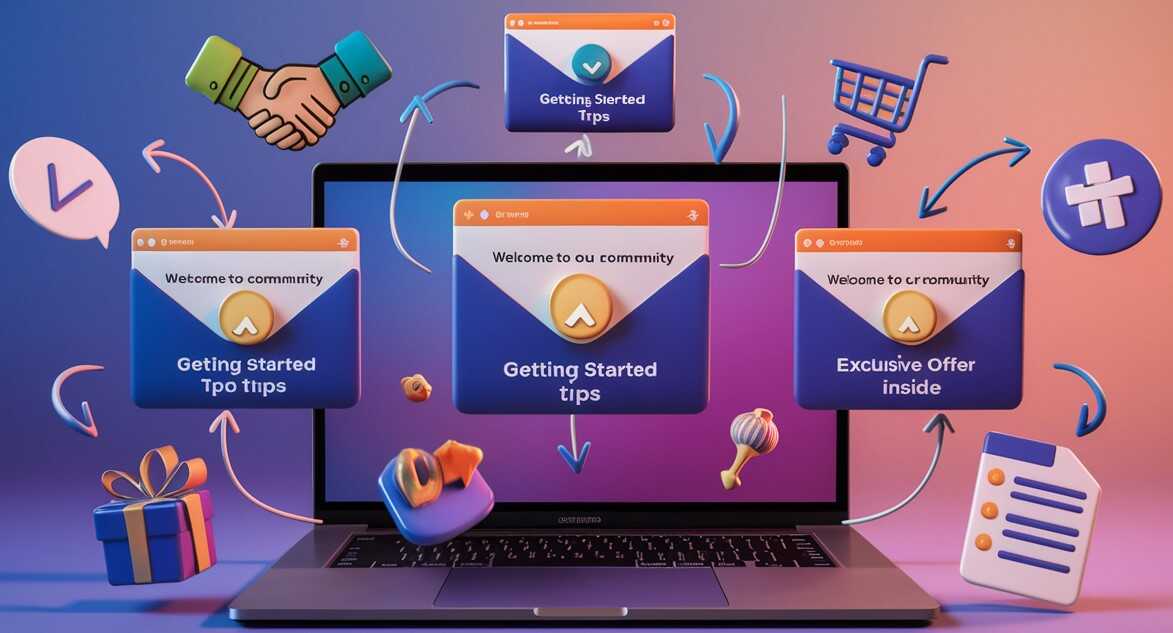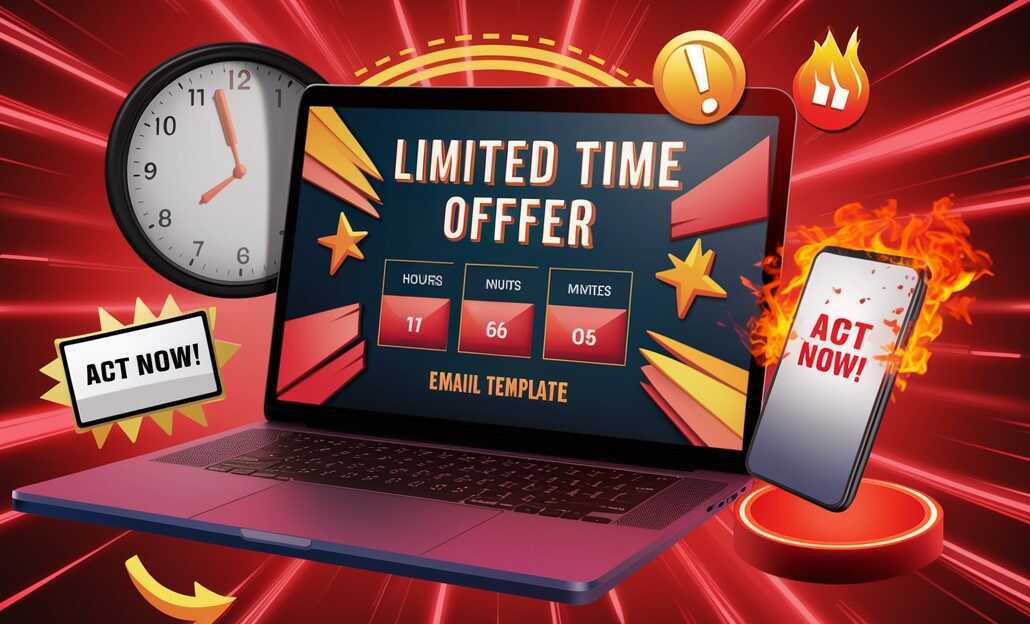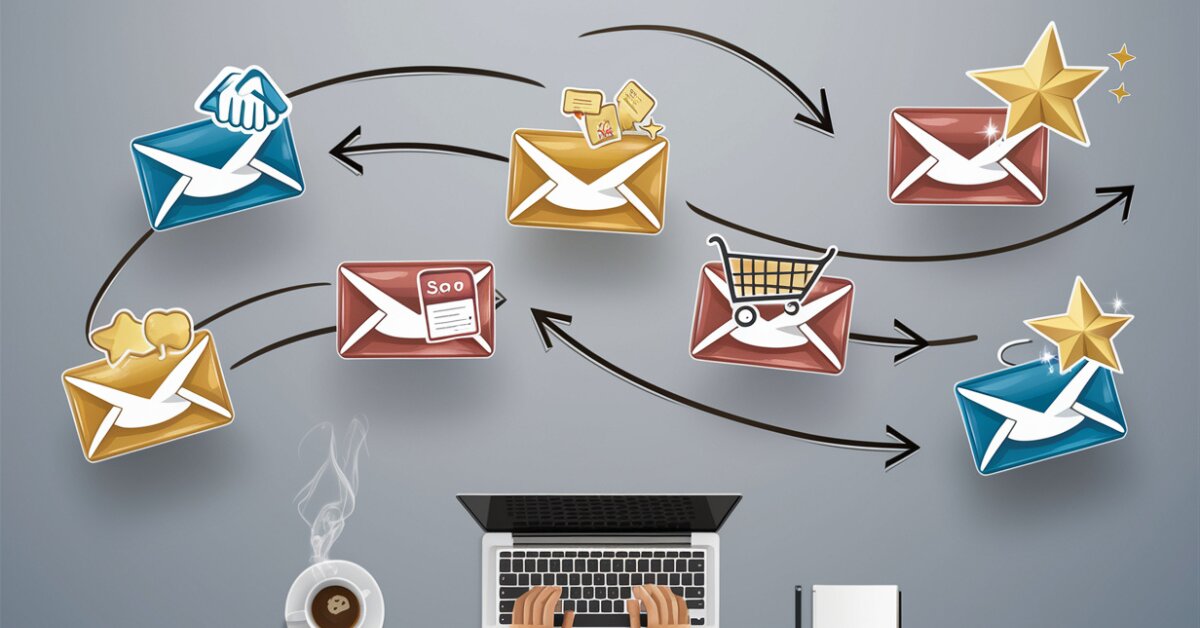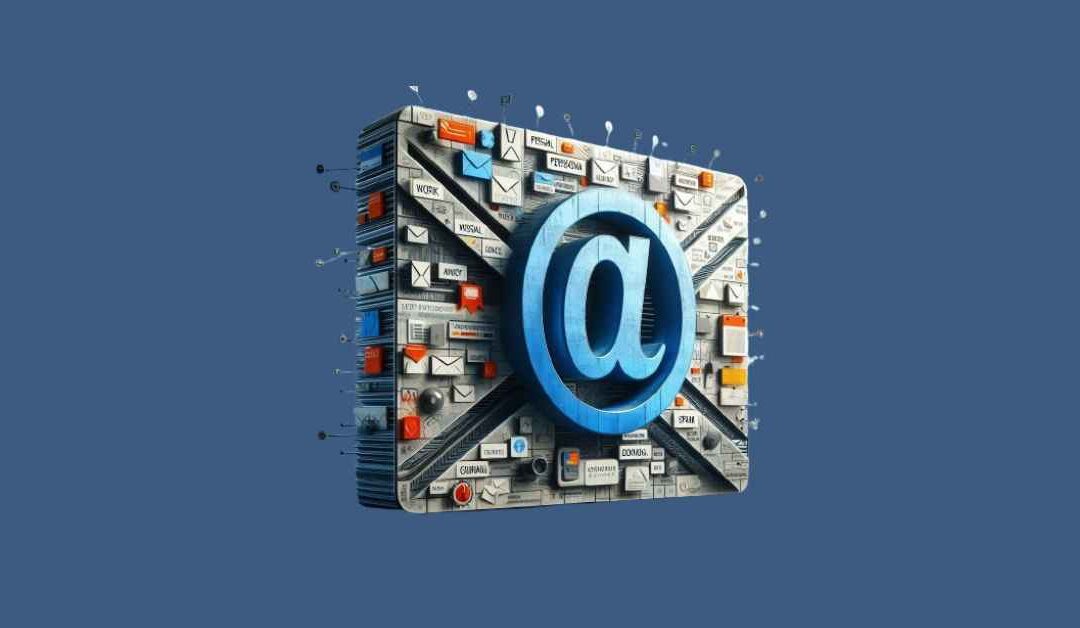Creating a high-converting welcome email series is like introducing yourself at a party; you want to be memorable, friendly, and leave a lasting impression. In sending email marketing campaigns, your first few emails are the golden ticket to grab attention, build trust, and gently guide your new subscribers toward becoming loyal customers. When done right, your welcome series can be the ultimate sales driver, setting the tone for a long and profitable relationship.
A killer welcome email series can be the secret sauce that transforms your subscribers into loyal customers. When done right, it’s like rolling out the red carpet for new leads, building rapport, and boosting conversions.
In this guide, I’ll walk you through creating an email welcome series that doesn’t just say “hello” but drives conversions like a pro, with real-world examples to spark your creativity.
Before we start creating that first impression with the welcome email series, let’s look at what is email welcome series is and why it is important!
Table of Contents
What is a Welcome Email Series?
An email welcome series is a sequence of automated emails sent to new subscribers or customers immediately after they sign up for your newsletter, product, or service. It is your chance to stand out, grab attention, and begin a meaningful conversation with your audience. An email welcome series lays the foundation for long-term loyalty, making it a critical part of any successful email marketing strategy.
The welcome email is a virtual handshake with a chance to make a great first impression and show people that they made the right choice in connecting with you. Instead of just one welcome email, a series allows you to nurture that relationship over time, building trust and engagement without overwhelming your new audience.
Why does it matter? The moment someone subscribes to your email list is a golden opportunity. At this point, they’re most engaged, eager to hear from you, and curious about what you have to offer.
A well-crafted welcome series should:
- Sets Expectations: It tells subscribers what they can expect from you, whether it’s tips, special offers, or regular updates.
- Builds a Relationship: Rather than throwing sales pitches right away, a welcome series can focus on building connection and trust by providing value upfront.
- Increases Engagement: Subscribers who feel welcomed and understood are more likely to open future emails, visit your website, or even buy from you.
- Boosts Conversions: With a strategic approach, your welcome series can guide new subscribers towards taking key actions like making a purchase, downloading content, or following your social media profiles.
How to Create a High-Converting Welcome Email Series

This simple guide will make each email count, from your warm first hello to creating urgency. Every step is designed to engage, build trust, and boost conversions.
- Define Your Goal
Before writing a single email, you need to clarify your objective. Do you want your welcome series to introduce your brand, encourage first-time purchases, or build a relationship with new subscribers?
Your goal will determine the tone, content, and structure of your welcome email series.
For example, if you run an E-commerce business, your goal might be to drive the first purchase. While service-based businesses might focus on building trust and showcasing case studies.
- Determine the Number of Emails in the Series
Decide how many emails will make up your welcome series. For most small businesses, 3 to 5 emails will get the job done. With 3 to 5 emails, you can spread out information without overwhelming your subscribers.
- Create a Timeline for Sending Your Emails
You need to space out your emails to keep subscribers engaged without overwhelming them. A common rule include:
- Email 1 should go out immediately after someone subscribes.
- Email 2 can be sent 2-3 days later.
- Email 3 may follow another 2-3 days later, and so on.
Spacing your email will help keep your brand fresh in their minds without coming off as too pushy.
- Craft Your Email Content
Ready to create a welcome email series that turns new subscribers into loyal fans? Let’s break it down, email by email, with tips and examples to help you get started!
Email1: The Warm Welcome
The first email in your welcome series should set the stage for the entire relationship you are going to build with your audience. It must be friendly and make your subscribers feel excited about joining your list.
This email is your chance to thank them for signing up, introduce your brand, and set expectations for what’s coming next.
What to Include:
- A warm greeting: Start by thanking them for signing up. Make it feel personal and welcoming.
- Introduce your brand: Give them a quick overview of who you are and what your business stands for.
- Set expectations: Let them know what kind of content they’ll receive and how often to expect your emails.
- Call to action: Whether it’s a special offer, discount, or link to valuable content, include something that invites them to take action.
Example
Subject: Welcome to [Brand Name]! Here’s a Special Gift to Get You Started
Hi Steve,
Welcome to the [Brand Name] family! We’re so happy you’ve joined us.
As a thank-you for signing up, here’s a special gift just for you: 25% off your first purchase with the code WELCOME25. Use it on anything you love from our collection!
At [Brand Name], we’re all about [brief brand mission or values]. We’ll be sending weekly tips, exclusive offers, and insider news straight to your inbox, so keep an eye out for exciting content from us.
In the meantime, check out our best-sellers here: [link to best-sellers]—we know you’ll find something you love!
If you have any questions, we’re just one email away.
Cheers,
[Your Name]
[Brand Name]
The purpose of the above welcome email template is to provide your new subscribers with a discount code to buy from your store and introduce your business and what news they will get from you.
Email 2: Get to Know Your Audience
Once you’ve sent your new subscribers a warm welcome email like the email above, it’s time to learn more about them. This second welcome email will help you understand your audience’s preferences, making it easier to deliver personalized content that resonates.
The more you know your audience, the better you can adjust and style your future emails, improving engagement and building stronger relationships with them.
What to include in this second welcome email series:
- Ask a simple question or survey: Encourage them to share their preferences or interests so you can deliver more relevant content.
- Highlight helpful resources: Suggest popular blog posts or products based on common interests to guide them in the right direction.
- Clear call-to-action (CTA): Invite them to click on a link, fill out a survey, or answer a question, making it easy to interact.
Example
Subject: Let’s Make Your Experience Even Better—Tell Us About Yourself!
Hi Steve,
We’re thrilled to be in your inbox again, and we want to make sure you get the most out of your experience with our business!
Can we ask for a quick favour? We’d love to know more about you so we can send content and offers you’ll find most valuable. Just click below and tell us what interests you most:
👉 [Link to Survey or Preferences Page]
Whether you’re looking for tips on [Topic 1], [Topic 2], or [Topic 3], we’ve got you covered! Your feedback helps us create the best experience for you.
In the meantime, check out some of our most popular blog content below:
- [Link to helpful blog post or resource #1]
- [Link to helpful blog post or resource #2]
- [Link to helpful blog post or resource #3]
We can’t wait to learn more about you!
Best,
[Your Name]
[Brand Name]
Tips: Including an easy-to-follow link will make it simple for them to share preferences or complete a quick survey.
In the example above, asking for feedback makes subscribers feel heard and valued, and knowing them lets you offer relevant content based on their choices to build a stronger connection.
Email 3: Highlight Your Best Content or Products
At this point, your subscribers are starting to get more familiar with your brand and now’s the perfect time to show them what you’re truly known for.
It can be your best-selling products, most popular blog posts, or standout services, this third welcome email should highlight the treasures of your brand that make people excited to stick around.
What to include in your third welcome email series:
- Showcase your best work: Highlight your top-performing content or best-selling products to spark interest.
- Social proof: Include testimonials, reviews, or user-generated content to build trust and credibility.
- Helpful recommendations: Personalise the recommendations if possible, based on what they’ve shown interest in (if you’ve collected preferences in the second welcome email series).
- Strong CTA: Use a clear CTA button; it can be a button to read a blog, make a purchase, or check out more about your brand.
Example 3:
Subject: Our Top Picks Just for You—Discover What Everyone’s Raving About!
Hello Steve,
We’ve noticed you’re settling in nicely, and we want to ensure you don’t miss out on the best of what our business has to offer! Here are our top picks, handpicked just for you:
Our Best-Selling Products:
💎 [Product 1 Name] – [One-line description of product + link to product]
🌟 [Product 2 Name] – [One-line description of product + link to product]
🚀 [Product 3 Name] – [One-line description of product + link to product]
What Our Customers Are Saying:
“[Product 1] has changed the game for me. I can’t live without it!”
— [Customer Name], Verified Buyer ⭐⭐⭐⭐⭐
“If you’re on the fence, just do it! [Product 2] is the best decision I’ve made this year.”
— [Customer Name], Verified Buyer ⭐⭐⭐⭐⭐
We think you’ll love these too! But don’t just take our word for it—check out what other people are saying about us and see for yourself!
Need Some More Inspiration?
Here are some resources to help you get started:
- [Blog Post #1 Title]: [One-line description + link to blog post]
- [Blog Post #2 Title]: [One-line description + link to blog post]
- [Blog Post #3 Title]: [One-line description + link to blog post]
Have any questions or need help picking the perfect product? Our team is here for you—just hit reply!
Happy exploring,
[Your Name]
[Brand Name]
This third welcome email series will help solidify your credibility and build trust by showing the value you bring. Highlighting your most popular products or content is a great way to increase engagement, as new subscribers will be curious to see what others love most. Plus, this is the email where you can nudge them toward a potential purchase or deeper interaction.
Email 4: Introduce Your Brand’s Story
By now, your subscribers have received valuable content and offers from you. Now it’s time to create a deeper connection by sharing your brand’s story. People love stories—they’re relatable, and memorable, and can humanize your business in a way that nothing else can.
This email is all about making your brand more than just a name, giving subscribers insight into your journey, mission, and values.
What to include in the fourth welcome email series:
- Share your brand’s origin story: Explain how your business started, what inspired it, and how it’s grown over time.
- Highlight your mission and values: Show what drives your brand beyond profits—this could be your commitment to quality, sustainability, customer service, or something unique.
- Include a personal touch: Use storytelling to make your journey relatable. Show the human side of your brand; it could be a challenge you overcame or the passion that keeps you going.
- Call to action (CTA): Use the CTA button to invite subscribers to learn more, support your mission, or explore products that align with your values.
Example
Subject: Here’s How It All Began—The Story Behind [Your Brand Name]
Hi Steve,
We’ve shared our best products and tips with you, but today, we want to take you behind the scenes and tell you the story of how [Your Brand Name] came to life.
It all started [X] years ago when [Your Name/Founder’s Name] had a vision: to create [briefly describe your product/service or the problem you wanted to solve]. What began as a small idea has now blossomed into a thriving community of amazing people, like you!
Why We Do What We Do
At [Your Brand Name], we’re driven by more than just creating products/services. We believe in [mission statement or core value, e.g., sustainability, empowering people, quality craftsmanship, etc.]. Every product we make and every decision we take revolves around this mission.
But it wasn’t always easy, we have faced [mention a relatable challenge, obstacle, or turning point], but with passion and a bit of grit, we kept pushing forward. And now, we’re proud to say that we’ve helped [number of customers, milestones, or impact achieved].
Our Promise to You
We’re committed to [value or promise, e.g., providing top-notch quality, using eco-friendly materials, giving back to the community, etc.]. Our story is still unfolding, and we’re so glad you’re here to be a part of it.
If you’d like to learn more about how we do things and what drives us, check out [link to blog post, video, or “About Us” page]. We’d love for you to become part of our journey.
Thank you for being with us!
Warm regards,
[Your Name]
[Brand Name]
This fourth welcome email in the series will help your subscribers feel like part of something bigger. When people connect with your story and your values, they’re more likely to become loyal customers.
By sharing your journey, you’re not just selling a product you’re building a brand relationship.
Email 5: Create a Sense of Urgency
This fifth welcome email series helps motivate your email subscribers to take immediate action. By creating a sense of urgency, you can push your audience toward completing a desired action, whether it’s making a purchase, signing up for an event, or claiming a special offer.

Urgency adds a layer of excitement and nudges people to act before they miss out on something valuable.
What to include in this final welcome email series
- Limited-time offers: Highlight that the offer is available only for a short period, such as a discount that expires soon.
- Scarcity tactics: Use scarcity tactics by mentioning limited quantities of a product or limited availability of a service.
- Countdowns: Use a countdown timer to visually increase the sense of urgency.
- Strong call-to-action (CTA): Use action-oriented language like “Act Now,” “Don’t Miss Out,” or “Claim Your Spot” to prompt immediate response.
Example
Subject: Last Chance! 24 Hours Left to Grab Your Special Offer
Hi Steve,
We wanted to remind you that our exclusive offer is about to expire, and we don’t want you to miss out!
Get 20% OFF your entire order but hurry! This deal ends in just 24 hours.
This is the best chance to get our [best-selling product], or our latest [service or content]. Now’s your moment. After tomorrow, this offer will be gone!
Here’s what you’ll get:
- 20% OFF everything in your cart.
- Free shipping on orders over $50.
Don’t wait too long—our top products are selling fast, and once they’re gone, they’re gone for good.
👉 Use code: LASTCHANCE20 at checkout
⏰ Offer ends: [Insert Deadline, e.g., Midnight, Date]
Running out of time?
Here’s a little sneak peek of our best-sellers flying off the shelves:
🔥 [Product 1] – [One-line description + link]
⚡ [Product 2] – [One-line description + link]
🌟 [Product 3] – [One-line description + link]
Don’t Miss Out!
It’s your last chance to snag this deal, so hit the button below and save before the timer runs out!
[Shop Now Button]
Need help or have questions? Just reply to this email, and we’ll be happy to assist you.
Thanks for being part of the [Your Brand Name] family!
Cheers,
[Your Name]
[Brand Name]
Urgency works because it plays on the human fear of missing out (FOMO). When subscribers feel they have a limited window to act, they’re more likely to engage quickly.
The urgency strategy helps convert subscribers who might have been on the fence, encouraging them to leap before they miss their chance.
- Personalize Where Possible
Simple personalisation tactics, such as using their first name or sending personalised recommendations based on their signup behaviour, can boost engagement significantly. Most email platforms allow you to personalise every aspect of your email.
- Automate the Series
Once your emails are written, you need to set up the automation. Most email marketing platforms like MailerLite, Moosend, Sender, or HubSpot, make it easy to set up automated workflows.
You can decide on triggers (e.g., when someone signs up) and schedule the timing of each email in the series.
- Segment and Evolve Your Series Over Time
As you collect more data about your subscribers, you can segment them into different groups to provide a more personalized experience. For example, a subscriber who clicks on multiple product links might benefit from product-specific follow-ups, while a content reader might appreciate more blog or tutorial recommendations.
- Test and Optimize
The work isn’t done after you hit “send.” Monitor key metrics like open rates, click-through rates, and conversions for each email in the series. Test different subject lines, and CTAs, and send times to see what resonates best with your audience. Continuous tweaking will help you optimise for higher conversions.
Pro Tips for a High-Converting Welcome Email Series
Creating a successful welcome email series isn’t just about saying hello—it’s about setting the tone for your relationship with new subscribers and guiding them towards taking desired action.
Here are some tried-and-true tips to help you make your welcome email series both impactful and effective.
- Automate Everything
Automating your welcome email series ensures that once a subscriber signs up, they receive a sequence of emails at the right time without you having to manually send them each time.
Automating your email workflows saves time and ensures consistency. Whether someone signs up at 3 AM or during the workday, they’ll immediately get the welcome message, keeping your brand fresh in their mind.
Email marketing automation tools like Sender, Moosend, HubSpot, Omnisend, or MailerLite allow you to create an automated workflow. With these tools, you can schedule the emails based on triggers (like when someone subscribes) and pre-defined intervals.
For example, you can schedule the first email to go out immediately, the second in 2 days, and the third in 5 days.
- Keep It Short and Sweet
Don’t overwhelm your new subscribers with lengthy emails full of unnecessary details. Get straight to the point while still keeping it engaging and helpful.
New subscribers don’t want to read an essay—they want valuable information delivered quickly. Short, to-the-point emails are more likely to get read and acted upon.
Focus each email on one main message or action. Make your point clearly and add value, whether you are introducing your brand, offering a discount, or sharing an important resource.
You can spread it across multiple emails if you have more to say.
- Use Catchy Subject Lines
Your email subject line is the first thing your subscribers see when they receive an email from you, so it needs to grab attention and entice them to open the email.
Your subject line should spark curiosity, offer value, or create excitement so that it will encourage more people to open and read the email.
Keep your subject lines short, intriguing, and action-oriented. Use words that evoke curiosity or excitement. Personalising subject lines (e.g., adding the subscriber’s name) can also boost open rates.
- Personalise the Experience
Tailor your email content to each subscriber’s preferences, behaviour, or interests. Personalisation can be as simple as using their name in the subject line or as complex as recommending products based on their browsing history.
Personalisation makes subscribers feel like you’re speaking directly to them, which increases engagement. By personalising your content, you build a deeper connection with your subscribers.
Use the data you collect from sign-up forms or from tracking subscriber behaviour. Segment your audience into different groups based on interests, location, or purchase behaviour. Email marketing automation tools like Sender, Moosend, HubSpot, Omnisend, or MailerLite come with this feature.
- Test and Optimise
Continuously analyze your email metrics to see what’s working and what isn’t. Based on that data, make changes to improve the performance of your welcome series.
Testing and optimising allow you to gradually improve open rates, click-through rates (CTR), and overall conversions. Without testing, you’re left guessing at what works best.
Use A/B testing (also known as split testing) to compare different versions of your emails.
For example, you can test two subject lines, designs, or even send times.
Then, analyse the results to see which version performed better. Look at key metrics like open rates, CTR, and unsubscribe rates. Make adjustments based on the data and repeat the process.
Final Thoughts
Your welcome email series is your brand’s first impression, and you know what they say about first impressions, right? They count! By crafting a thoughtful, engaging sequence, you’re not just welcoming subscribers; you’re opening the door to a lasting relationship.
Every email should have a clear purpose; it may be to introduce, inform, or inspire action. Keep it personal, sprinkle in value, and make the next step easy. With the right blend of strategy and authenticity, your welcome email series is a powerful tool for turning subscribers into loyal fans and customers.





0 Comments